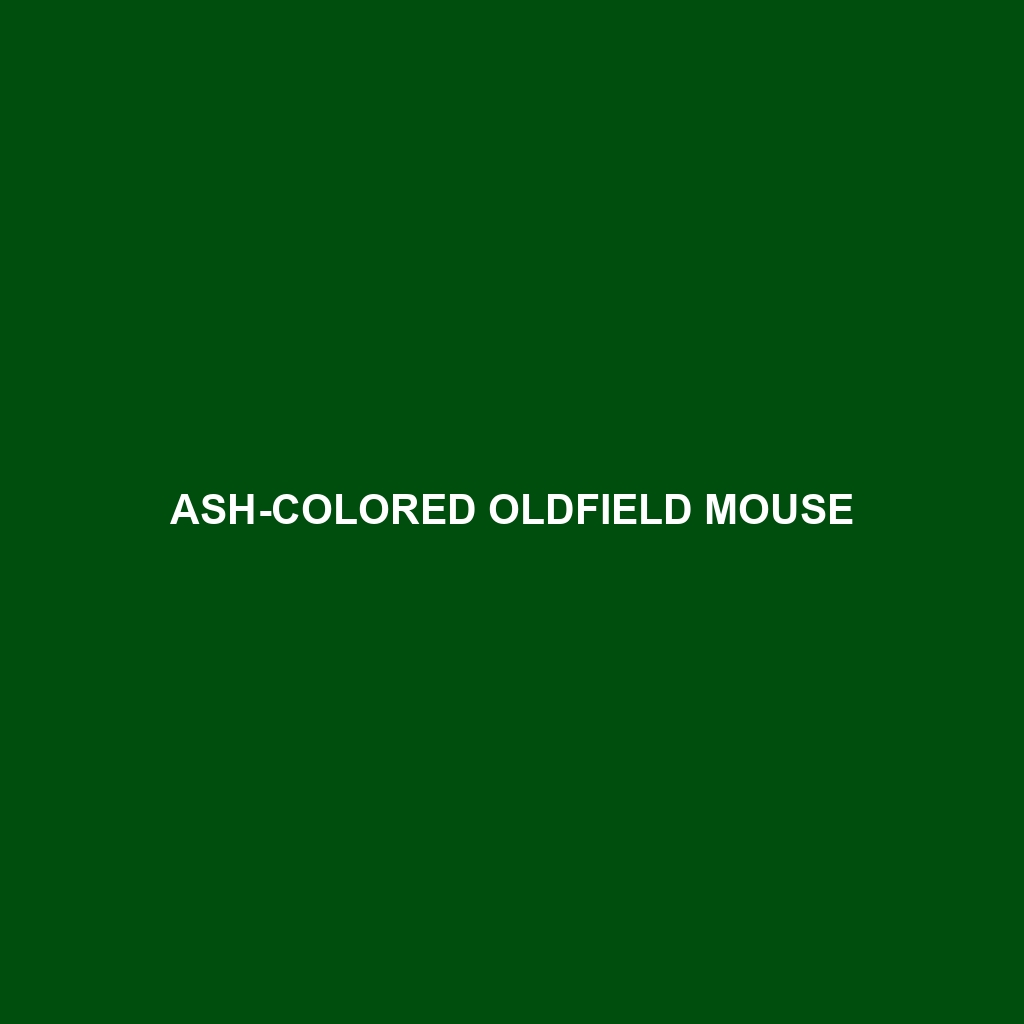Ash-colored Oldfield Mouse
Common Name: Ash-colored Oldfield Mouse
Scientific Name: Peromyscus polionotus
Habitat
The Ash-colored Oldfield Mouse is primarily found in the southeastern United States, predominantly inhabiting areas of coastal plain habitats. These mice prefer dry, sandy soils and are commonly seen in open fields, upland areas, and grasslands. They thrive in disturbed habitats, such as old fields and grassy areas adjacent to shrubby thickets, providing ample cover and food sources.
Physical Characteristics
The Ash-colored Oldfield Mouse is characterized by its medium size, typically measuring about 6 to 8 inches in length, including its long, slender tail. Its fur is a soft gray-brown shade, often with lighter underparts that blend seamlessly into its environment, making it an effective camouflager. Notable features include large ears and prominent eyes, which enhance its sensory abilities, allowing it to adapt to its landscape effectively.
Behavior
This species exhibits primarily nocturnal behavior, emerging at night to forage and explore its territory. Ash-colored Oldfield Mice are known for their agility and quick movements, often navigating through grass and underground burrows. They are social animals, often found in small groups, which may contribute to their survival against potential predators. Their vocalizations include squeaks and chirps, which play a role in social interactions.
Diet
The Ash-colored Oldfield Mouse is an omnivorous creature with a diverse diet. Its feeding habits include a variety of seeds, fruits, and green plant material, making it a forager that plays a role in seed dispersal. Insects and other small invertebrates also constitute part of their diet, particularly during the summer months when these sources are abundant.
Reproduction
Reproductive habits of the Ash-colored Oldfield Mouse are characterized by a breeding season that typically occurs in the warmer months, from late spring to early fall. Females can produce multiple litters annually, each containing 3 to 6 young. The offspring mature quickly, often leaving the nest within a few weeks, which aids in population sustainability.
Conservation Status
Currently, the Ash-colored Oldfield Mouse is categorized as a species of concern due to habitat loss and fragmentation. While not officially classified as endangered or threatened, ongoing conservation efforts are vital to preserve its natural habitats and maintain population stability.
Interesting Facts
The Ash-colored Oldfield Mouse has adapted remarkably well to changing landscapes, demonstrating resilience in the face of habitat alteration. Their ability to burrow enables them to escape predators and stay insulated from extreme environmental conditions. They play a crucial role not just as seed dispersers but also as prey for various predators, showcasing their importance in the food chain.
Role in Ecosystem
The Ash-colored Oldfield Mouse serves as a key species in its ecosystem. By consuming seeds and plant materials, they contribute to the control of vegetation growth and the dynamic balance of their habitats. As prey for larger animals such as hawks and snakes, they are integral to maintaining the ecosystem’s food web, influencing predator populations and biodiversity in their environments.
